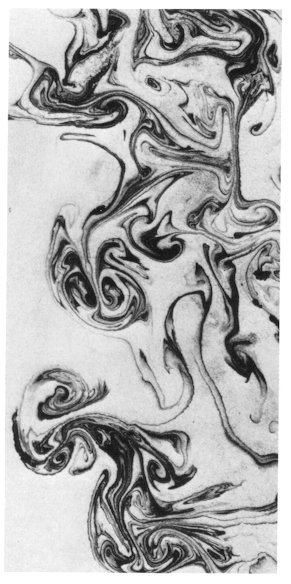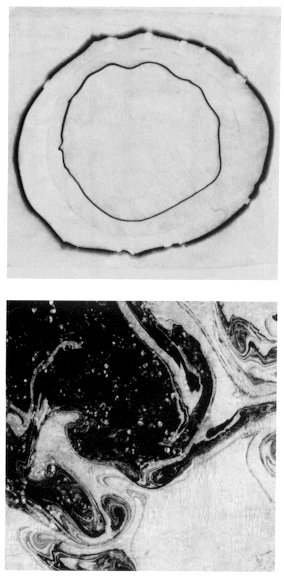|
(iv) Flowing India ink Fluid patterns using color paints have been used since the old days both in Japan and the West. The skill of "dye by flow of India ink" of transcribing a fluid pattern floating and spreading on the surface of water on Japanese paper was already being used in the Heian Period of Japan. A similar method was used in the West called "marbling". This created patterns similar to the surface of marble stones with favorite colors, and they have been used in book covers and other artistic products. It is impressive that there were many elegant marbling works with multi colors in the West, and in contrast, the "dye by flow of India ink" in Japan used monochromatic fluid patterns. The procedures for the India ink flow are described below. Water is put in a plane wide container to the depth
of 2-3cm. India ink is carried carefully onto the surface of the water.
It is stirred gently with a tool with a sharp edge (preferably put boiled
pine resin on the edge), and shapes of the patterns are modified. Put a
piece of paper gently on it and the pattern is quickly copied. Various
kinds of papers can be used, but Washi (Japanese paper) is best. Indigo
is used when we want to use colors.
|

